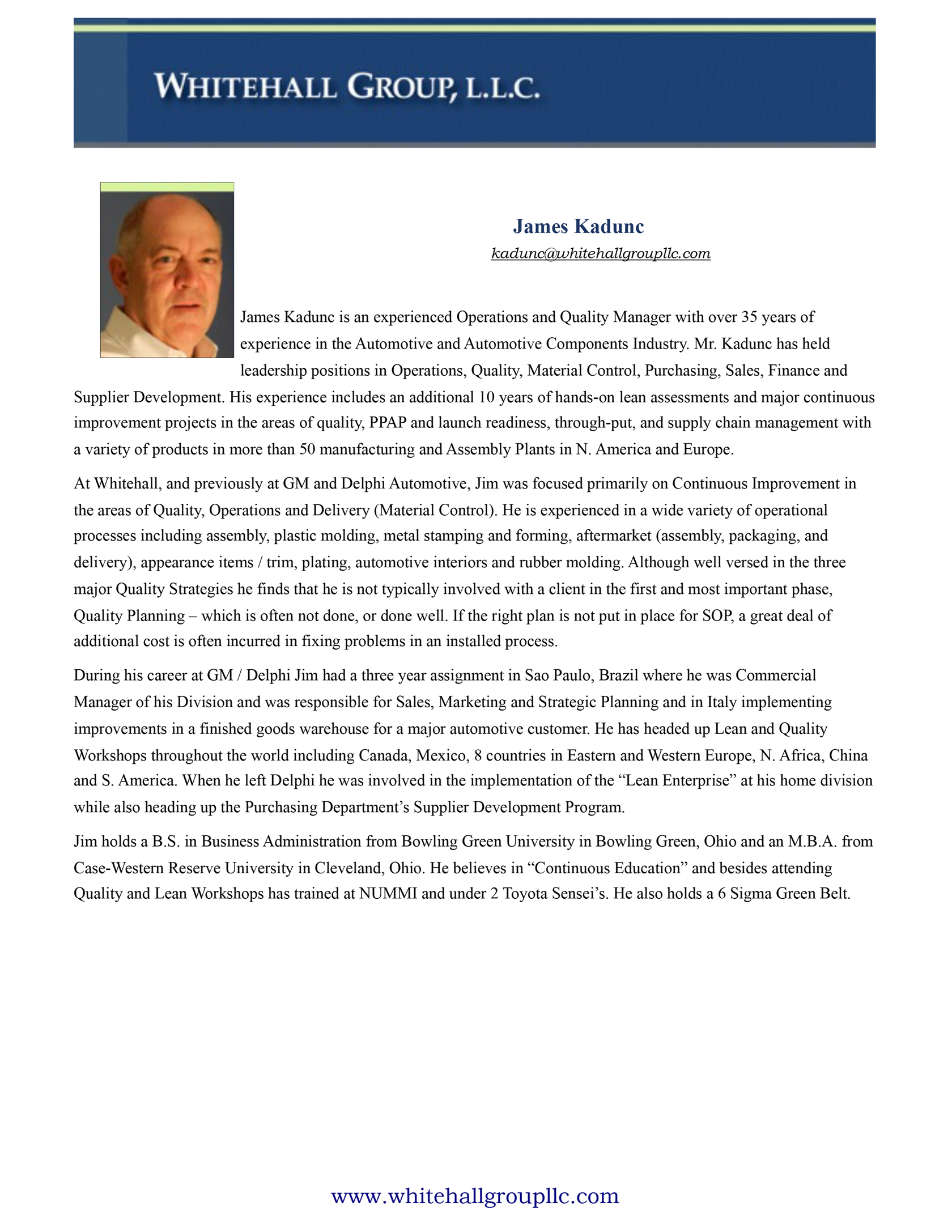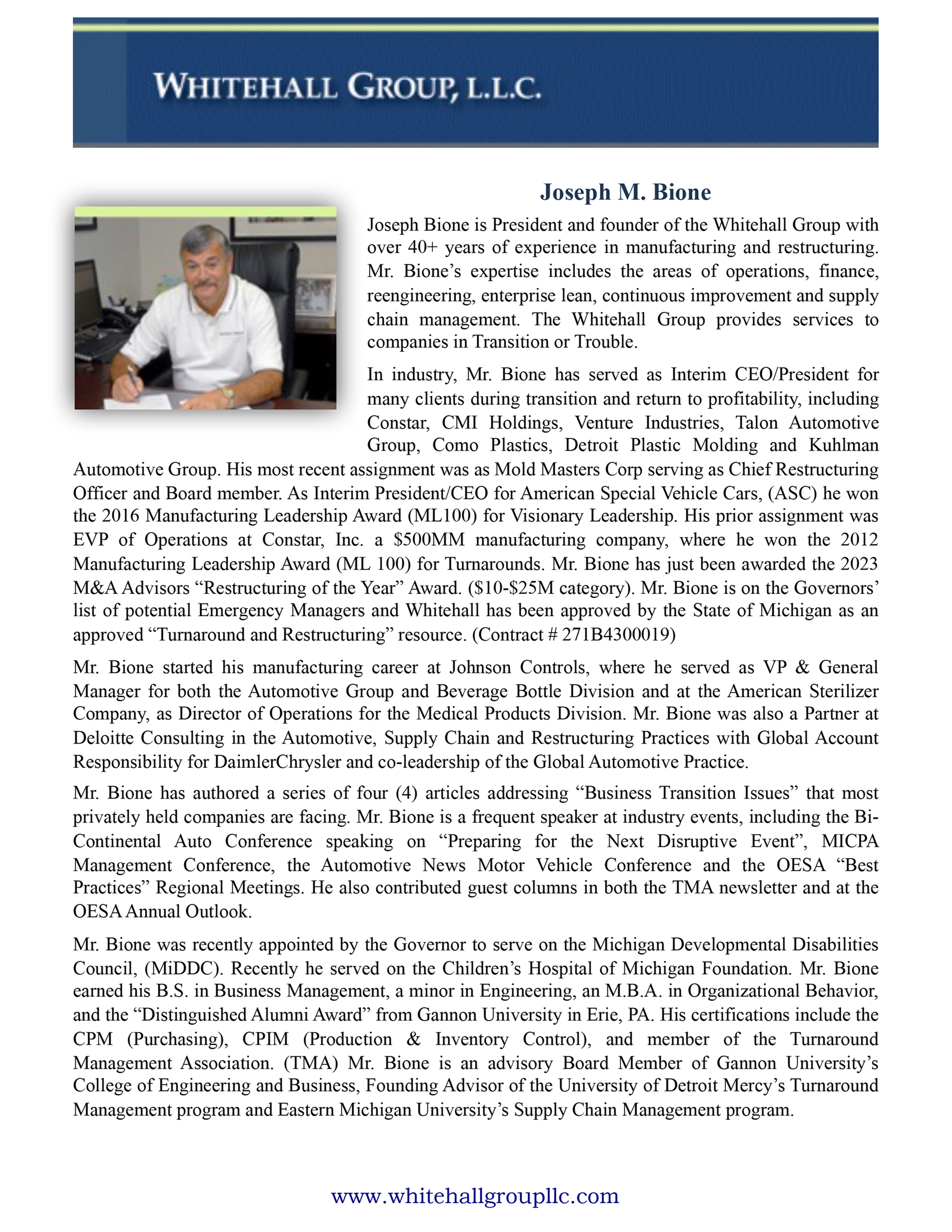Chapter 11 Crisis Management & Orderly Liquidations




Necessary changes can get your organization’s future on the right track.
Whitehall professionals are adept at handling situations caused by a lack of financial resources, a depressed operating environment, organizational turmoil, or substantial outside pressure.
We recognize that critical, short-term problems demand immediate answers. We can quickly assess the requirements of the situation and assemble the resources that the reorganization demands. The needs of our clients and the demands of their situations determine the nature and extent of our assistance.
In the middle of a crisis, even the best managers sometimes fail to see required actions, options, and possibilities. Managers often feel the situation is insurmountable or, alternatively, that it will get better with a “business as usual” approach. Managers may be so involved with “fighting the fire” that they are unable to get to the source of the problem. Stockholder and management investment in the company justify a third-party, pragmatic perspective. New, object approaches by Whitehall management can re-energize the company.
Companies in trouble can be saved, but not without change. Making the necessary changes requires courage and commitment. Sources of weaknesses need to be spotlighted, and changes must be made to maximize the company’s strengths. Whitehall will identify required changes and cause those changes to be made.
If long-term viability is a concern, Whitehall can quickly address the financial and operational viability of the business. Whitehall can then assist companies in identifying and negotiating joint venture and/or sales agreements, maximizing shareholder value.
If no viable options for business continuity exist, Whitehall staff are skilled in the orderly liquidation process, either on behalf of the secured creditor(s) or directly for the client company.
Crisis Management Case Study #1
$500 Million Publicly Held Beverage Bottle Manufacturing Company
The Facts
- Plants in U.S. and Europe.
- Years of losses (from $1 billion in sales to $500 million in 5 years).
- Previous bankruptcy that did not address or fix issues.
- $235 million of debt and only $28 liquidation value.
- Looking to close business.
The Approach
- Took active management roles (CEO, COO, CFO, VP, Quality/Engineering).
- Stabilized the customer base (Coke, Pepsi, Kraft Foods, Conagra, etc.).
- Established a Wells Fargo financing plan.
- Took the company through prepackaged bankruptcy in 90 days.
- Consolidated the organization and plants, improving bottom-line performance and quality/delivery.
- Returned the company to a positive EBITDA in next 90-120 days.
The Results
- Zero customer loss due to improved quality and delivery performance.
- New business opportunities were achieved.
- Increased base business by $100 million.
- EBITDA first year returned to over $28 million annually.
- Successfully sold business to a strong competitor/industry leader covering most of the debt.
- Whitehall won a 2012 ML100 Award for Turnaround of the Year on this project.
Crisis Management Case Study #2:
Tier 1 OEM Supplier of Recreational and Agricultural and Low Volume Heavy Vehicle Heating and Air Conditioning Systems
The Facts
- Joint proposal with an accounting firm, upon repositioning of operational performance to enhance value, and ultimate yield to PBGIC in excess of conventional receivership liquidation.
- Stable company recovering from 2008 economic crisis impact upon customer base, revenue decline, and cost increases.
- Placed in receivership by PBGC as a result of parent company contribution/funding deficiencies.
- Shareholder draws coupled with declining profitability post recovery had created a less than optimal operating results and operational degradation.
The Approach
- Reviewed financial performance and developed operating budget reflective of present book of business and in place operating profile-a base line.
- Reviewed primary cost drivers of material and labor for identification of areas of opportunity.
- Developed or confirmed labor and overhead associated with operating profiles and opportunities related thereto.
- Evaluated personnel and systems to extent required to facilitate improvements.
- Normalized prior year results of operations to cleanse penalties arising due to lack of cash and potentially recoverable fees from parent company.
The Results
- Operational savings identified in several key areas:
- headcount reduction and labor management, resulting in 25% improvement
- material costing and payment terms (normalized CIA to Credit for approximately 35 suppliers, progressing on pricing and prompt pay discounts)
- Price increase potential (small customers)
- Inventory purchasing strategies (nearly $100,000 reduction in live inventory on hand)
- Determined and quantified value potential differential for sale in place versus orderly liquidation at $4 million increase over liquidation before improvements and up to 8 million with operational improvements.
- Primed lending put in place to facilitate future supplier terms and pricing enhancements.
- Scrap purge resulted in 30% recovery against first cost, well in excess of bulk liquidation of inventory.





